I’m really pleased to be able to provide the results of our 2010 Reader Survey. A big thanks to the 100+ people who took the time to get involved with the survey. Your input is crucial and is very much appreciated. The survey overall had two purposes: to get feedback on improving what we do and to get a snapshot of some related issues.
For the dedicated, I’ve provided nearly all the results below. I’ve only left out a couple of questions such as the income one which were compulsory in the survey tool but not one I was seeking info on. If you get to the bottom you’ll see what we’re planning to change as a result.
Overall Satisfaction
A pleasing result overall for this one.
Site content
Although a good result, this one shows the opportunity to improve the level of people very satisfied. We’re already aware of the need to do more in-depth stories etc and this emphasises that.
Most useful sections
This one is interesting. There’s a lot of support for the weekly media roundup and standalone stories on virtual worlds and Second Life specifically. The lack of interest appears to fall around Op-Ed pieces and the weekly machinima roundup. Interestingly, the Op-Ed pieces tend to get the highest website traffic, so it appears the more dedicated readers aren’t that keen on them but that they attract a lot of one-off interest.
Least useful sections
This one is a mixed bag. It’s obvious people don’t like the machinima roundup and Op-Ed pieces, but for the rest there’s conflicts with the ‘most liked’ chart.
New site suggestions
The big winners here are guest writers and in-world events. I have to say the latter surprised me given the amount of activities already occurring, but it’s well and truly noted. More on that below.
Likelihood of recommending the site to others
Site usability
A little over half of people believe the site has a better layout and usability than similar sites, with the large majority of the rest stating it’s about the same. We’ve put a lot of effort into that side of things, so am glad it’s paying off to some extent.
Method of site access
No real surprises here. The ‘Other’ responses all mentioned Twitter and Facebook updates as their main access point.
Level of interest in virtual worlds
Again no major surprises: most respondents had either an education or personal interest.
Intentions for the coming year
Slow growth is the best summary of that result.
Age breakdown
Physical World versus avatar gender
A couple of respondents asked why this question was in the survey: it was purely to confirm that the gender divide with avatars tends to be the exception rather than the rule.
General online behaviour
Where to from here?
Based on the survey, there’s a handful of things I can announce of the bat:
1. Weekend Whimsy will cease to be posted each week, reverting to a renamed monthly piece. The featured machinima on the front page will continue.
2. We’ll be putting out a call for guest writers in coming weeks.
3. We’ll start thinking about what sort of in-world events could be held.
4. We’ll do our best to do more in-depth profiles and news on new environments and key events.
The Prize
About a third or survey respondents went into the prize draw for $30 worth of virtual worlds books or an equivalent donation to Metaverse Aid. The lucky winner is Holt Roussel – Holt, I’ll be in touch to organise your prize choice.
Thanks again everyone for taking the time and if you have any queries about the results, post away in the comments.







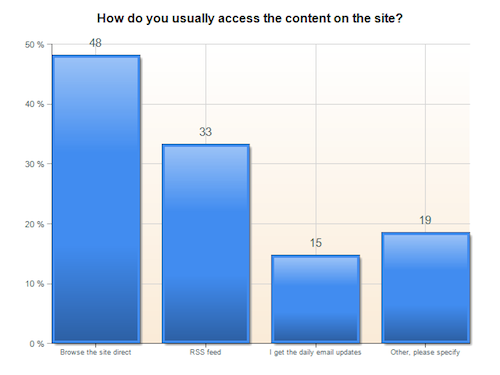


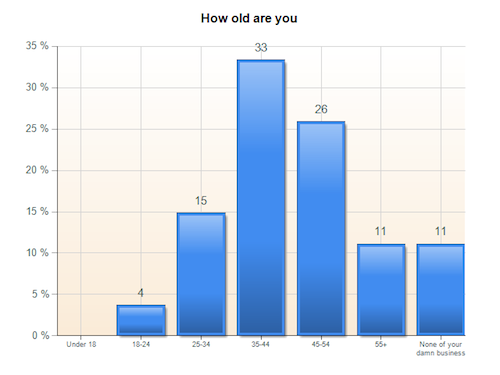
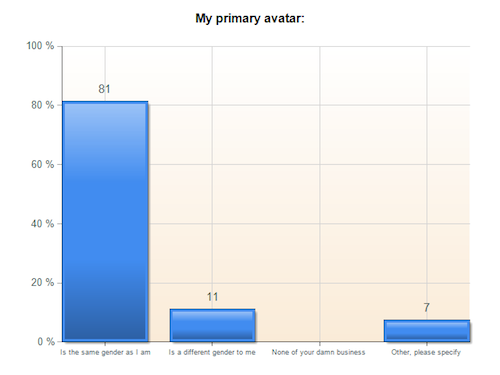

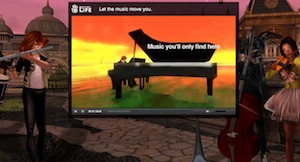




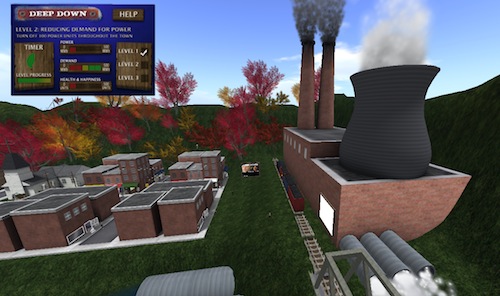

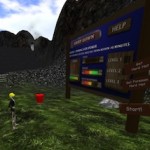


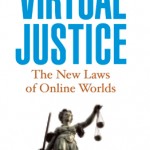


Recent Comments